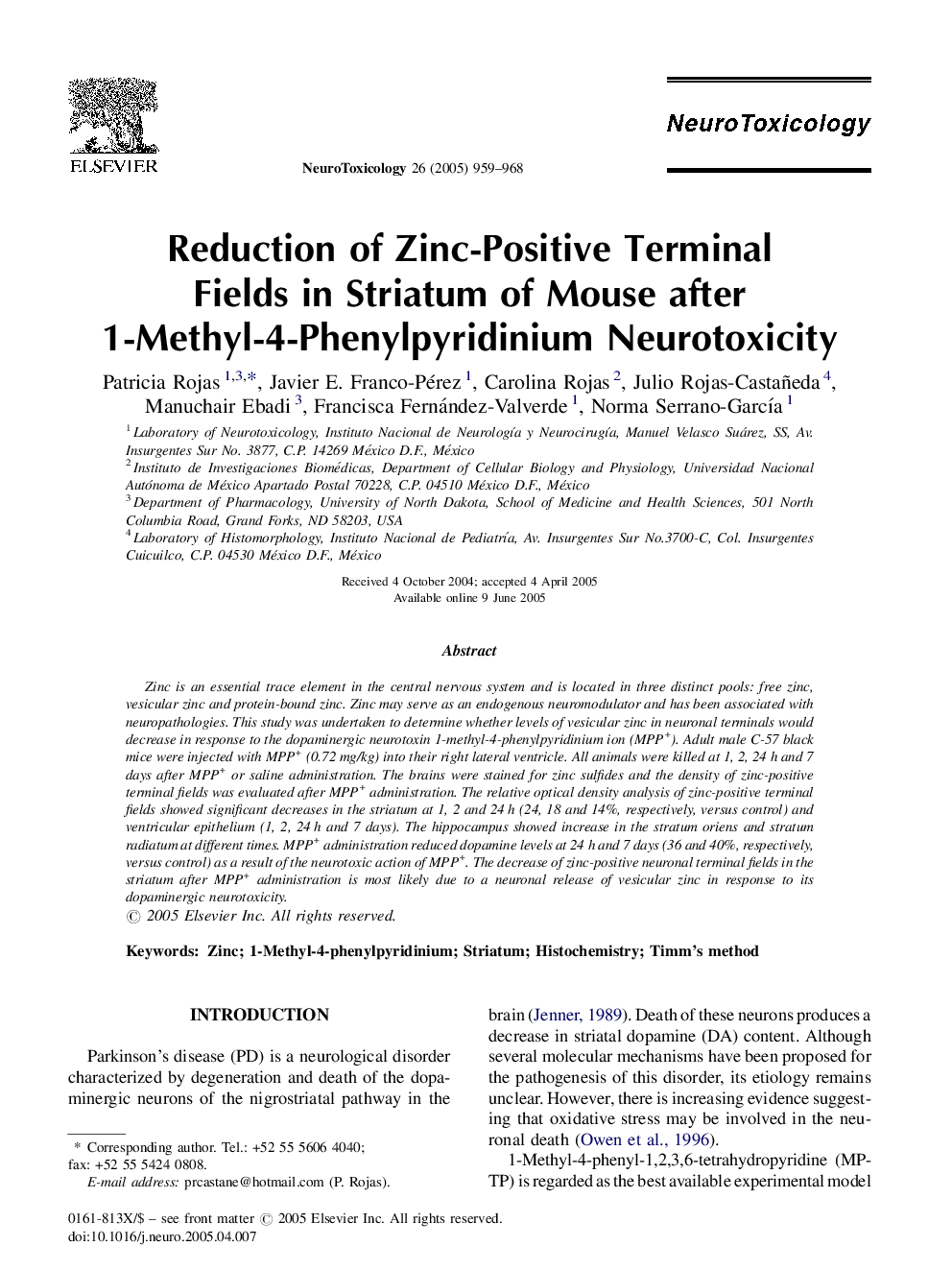| Article ID | Journal | Published Year | Pages | File Type |
|---|---|---|---|---|
| 9032379 | NeuroToxicology | 2005 | 10 Pages |
Abstract
Zinc is an essential trace element in the central nervous system and is located in three distinct pools: free zinc, vesicular zinc and protein-bound zinc. Zinc may serve as an endogenous neuromodulator and has been associated with neuropathologies. This study was undertaken to determine whether levels of vesicular zinc in neuronal terminals would decrease in response to the dopaminergic neurotoxin 1-methyl-4-phenylpyridinium ion (MPP+). Adult male C-57 black mice were injected with MPP+ (0.72Â mg/kg) into their right lateral ventricle. All animals were killed at 1, 2, 24Â h and 7 days after MPP+ or saline administration. The brains were stained for zinc sulfides and the density of zinc-positive terminal fields was evaluated after MPP+ administration. The relative optical density analysis of zinc-positive terminal fields showed significant decreases in the striatum at 1, 2 and 24Â h (24, 18 and 14%, respectively, versus control) and ventricular epithelium (1, 2, 24Â h and 7 days). The hippocampus showed increase in the stratum oriens and stratum radiatum at different times. MPP+ administration reduced dopamine levels at 24Â h and 7 days (36 and 40%, respectively, versus control) as a result of the neurotoxic action of MPP+. The decrease of zinc-positive neuronal terminal fields in the striatum after MPP+ administration is most likely due to a neuronal release of vesicular zinc in response to its dopaminergic neurotoxicity.
Related Topics
Life Sciences
Environmental Science
Health, Toxicology and Mutagenesis
Authors
Patricia Rojas, Javier E. Franco-Pérez, Carolina Rojas, Julio Rojas-Castañeda, Manuchair Ebadi, Francisca Fernández-Valverde, Norma Serrano-GarcÃa,
